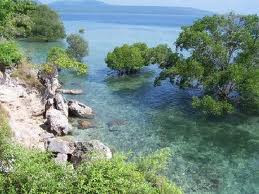West Bali National Park consists of several types of vegetation is the mangrove forest, beach forest, monsoon forest, lowland rain forest, savanna, coral reefs, seagrass beds, sandy beaches, and shallow and deep ocean waters.
This national park has 175 species of plants and 14 species of them rare species such as bayur (Pterospermum javanicum), ketangi (Lagerstroemia speciosa), burahol (Stelechocarpus burahol), sandalwood (Santalum album), and sonokeling (Dalbergia latifolia).
In addition to having bird species are endemic and endangered Bali starling (Leucopsar rothschildi), there are other bird species such as white starling (Sturnus melanopterus), terucuk (Pycnonotus goiavier), white and black-headed ibis (Threskiornis melanocephalus).
In this national park can be found several animals such as deer (Muntiacus muntjak nainggolani), mongoose (Pardofelis marmorata), pangolin (Manis javanica), porcupine (Hystrix brachyura brachyura), and (Tragulus javanicus javanicus).
In this national park can be found several animals such as bison (Bos javanicus javanicus), barking deer (Muntiacus muntjak nainggolani), mongoose (Pardofelis marmorata), pangolin (Manis javanica), porcupine (Hystrix brachyura brachyura), and (Tragulus javanicus javanicus).
While the marine life around the island and the Cape of the Dark consists of 45 coral species such as Halimeda macroloba, Chromis spp., Balistes spp., Zebrasoma spp., And Ypsiscarus ovifrons; 32 species of fish such as fish flag (Platax pinnate), fish conscious (Siganus lineatus), and barracuda (Sphyraena jello); nine marine mollusk species such as southern clams (Tridacna derasa), triton trumpet (Charonia tritonis), and giant clams (Tridacna gigas).
Bali Starling bird (Leucopsar rothschildi)
Bali starling is the belle of this national park wildlife, including birds and dandies who always enjoyed a clean habitat, as well as cruise flight is never far away. These birds require extra care and strict supervision, because the population is low and easy to catch.











